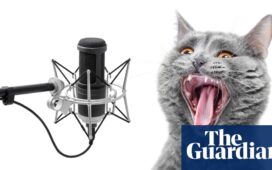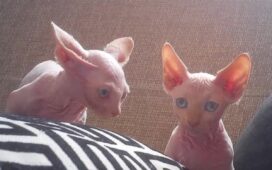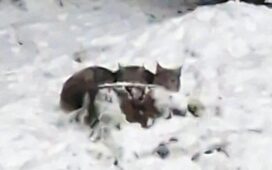One of the world’s rarest penguins has been crowned New Zealand’s bird of the year, in an unusually sedate year for the competition, free from the foreign interference and voting scandals of previous events.
The endangered yellow-eyed penguin, or hoiho, is the largest of New Zealand’s mainland penguin species and is distinctive for the pale yellow band of feathers linking the eyes.
The hoiho, meaning “noise shouter” in Māori due to its shrill call, lives along parts of the South Island’s east coast and in the sub-Antarctic Auckland Islands. The shy, fishy-smelling species tends to live in native coastal forests, scrub or dense flax.
There are believed to be roughly just 4,000 to 5,000 left in the world, according to the department of conservation, and its numbers are declining. The number of mainland breeding birds has dropped by 78% over the last 15 years – including an 18% dip over just the last year alone, says the Yellow-eyed Penguin Trust.
“This spotlight couldn’t have come at a better time,” said Nicola Toki, chief executive of Forest & Bird, the environmental organisation that runs the annual competition.
“This iconic penguin is disappearing from mainland Aotearoa [New Zealand] before our eyes.”
The birds are “being hammered from all angles” including diseases, dog attacks, predation from introduced pests, she said in a statement. The penguin’s fishy odour is irresistible to dogs, which can smell them from a distance.
The penguins were also drowning in set nets – nets anchored to the seafloor with weights – and are struggling to find food, Toki said, adding the birds urgently need marine protected areas to secure their survival.
The bird of the year competition was launched in 2005 to raise awareness about the plight of New Zealand’s native birds, many of which are threatened, on the brink of extinction or already extinct due to the introduction of pests, human activity and declining habitats.
New Zealand’s only native mammals are bats and marine species, putting the spotlight on its birds, which are beloved – and often rare.
Over the years, the contest has become a lightning-rod for scandal, from crowning a bat the winner in 2021, to accusations of Russian interference in 2019, and claims Australians attempted to rig the contest in favour of the shag in 2018.
The two-week competition attracted more than 52,000 verified votes – a significant drop compared with 2023’s event, which leapt to 350,000 votes across 195 countries after British-American comedian and talkshow host John Oliver ran a global campaign for the threatened pūteketeke – a grunting, puking bird with an unusual repertoire of mating rituals.
Oliver’s self-described “alarmingly aggressive” campaign, including buying up billboards in New Zealand, Japan, France, the UK, India and the US state of Wisconsin. A plane with a pūteketeke campaign banner also flew over the beaches of Rio de Janeiro in Brazil.
His efforts were rewarded when the pūteketeke was crowned the 2023 winner.
The hoiho, which secured 6,328 votes to win, also attracted celebrity endorsements, including from conservationist Dr Jane Goodall, host of the Amazing Race Phil Keoghan and former prime ministers Helen Clark and Chris Hipkins but the competition was a more ‘homegrown’ affair, Forest & Bird’s Ellen Rykers told RNZ.
This year, local campaigners sought votes in the usual ways – launching meme wars and getting tattoos to prove their loyalty.
The hoiho bid was run by a collective of wildlife groups, a museum, a brewery and a rugby team in the city of Dunedin, making it the highest-powered campaign of the 2024 vote.
The Hoiho joins the kākāpō as the only bird to have taken out the avian election twice. The kākāpō won in 2008 and 2020.
The tiny karure, a small “goth” black robin found only New Zealand’s Chatham Island, came second, while the kākāpō – the world’s heaviest, longest-living parrot – came third.














